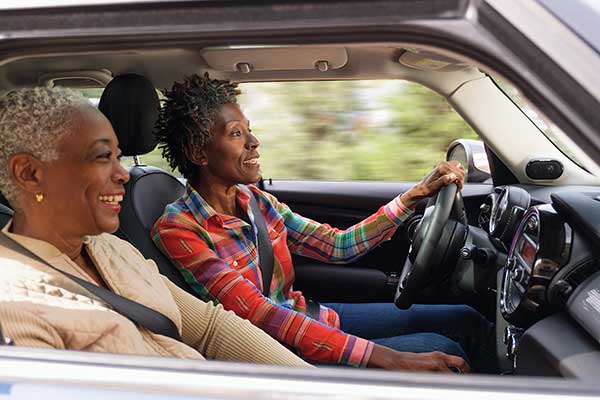Holiday Tips for People Living with OAB
Dec 06, 2021 03:33AM ● By Family Features
How to manage an overactive bladder around travel, socializing and entertaining
You’re sharing a great conversation with friends at a holiday party when it hits you: You need to go, and you need to go now. As you make a clumsy exit, unsure if you’ll be able to make it to the bathroom in time, you may ask yourself for the thousandth time, “is this normal?”
You’re not alone. More than 30 million Americans 40 and older live with the symptoms of overactive bladder (OAB). That’s about 1 in 10 people and as many as 40% of women in the United States. Yet many do not seek help from a physician for their symptoms. Rather, many continue to cope with the symptoms and navigate their lives around their symptoms of OAB.
 “People, both men and women, are reluctant to mention OAB concerns to their doctors; it’s embarrassing for them to discuss the topic,” said Dr. Cornelia Haag-Molkenteller, a clinically trained urologist and executive vice president and chief medical officer at Urovant Sciences, Inc. “Because of the stigma, many patients do not seek out medical treatments that are available to help manage the symptoms that have a limiting effect on their lives.”
“People, both men and women, are reluctant to mention OAB concerns to their doctors; it’s embarrassing for them to discuss the topic,” said Dr. Cornelia Haag-Molkenteller, a clinically trained urologist and executive vice president and chief medical officer at Urovant Sciences, Inc. “Because of the stigma, many patients do not seek out medical treatments that are available to help manage the symptoms that have a limiting effect on their lives.”
Identifying an Overactive Bladder Condition
OAB is a common lower urinary tract or bladder health problem that can cause incontinence, which is the leaking of urine that cannot be controlled.
Symptoms of OAB may include urgency, meaning a sudden need to urinate immediately; frequency, which is defined as urinating more than eight times per day; urge incontinence, or urine leakage following a sudden urge.
There are many causes of OAB, including taking certain medications and being overweight. Your risk also increases if you have had a stroke or have Alzheimer’s disease.
Managing an Overactive Bladder
According to the American Urological Association, the first step in managing OAB is behavior modification. That means patients should talk with their health care providers to learn about the benefits of new habits, such as restricting fluid intake, reducing sodium and limiting alcohol consumption, for example.
If changing some habits does not work, the next step is usually oral pharmacological therapies. A third option available if mediations don’t work are medical procedures to manage symptoms.
If you think you may be experiencing symptoms of overactive bladder, talk to your doctor and ask for help managing the condition. You can also find more information at Urovant.com.
Practical Tips to Help Manage OAB
You don’t have to just cope with the symptoms of OAB, talk to your doctor. Here are some helpful tips to manage your symptoms over the holiday.
Travel
- Stop every 2-4 hours to help reduce strain on your bladder
- Drink plenty of water but limit your intake a few hours before traveling
- Kegel exercises can help improve OAB symptoms
- Wear an absorbent pad that can hold more liquid on your travel days
- Book an aisle seat near the bathroom
Diet
Drink six to eight glasses of fluid, 8-ounce each daily. However, avoid foods and beverages that can irritate the bladder including:
- Caffeinated beverages and foods
- Alcohol
- Spicy foods
- Citrus fruits and juices
- Carbonated beverages
- Dairy
- Sugar, honey or artificial sweeteners
Photos courtesy of Getty Images

